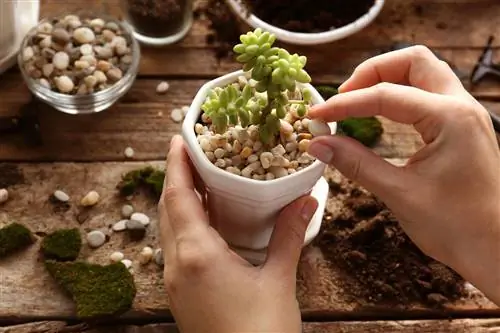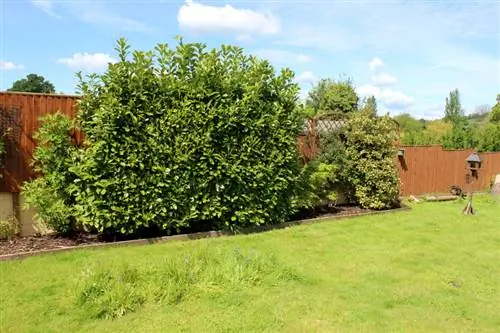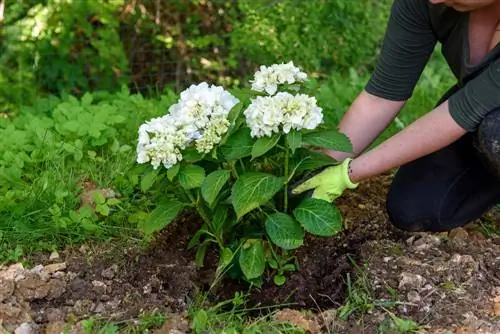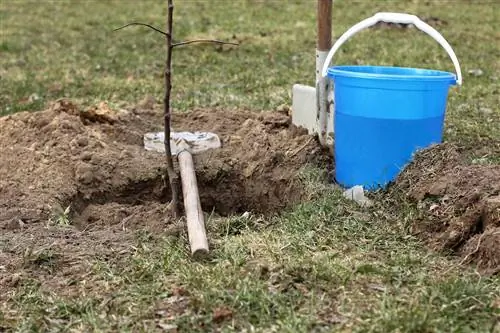- Author admin [email protected].
- Public 2023-12-16 16:46.
- Last modified 2025-01-23 11:21.
Soil is the basis of all he althy tree growth. A permeable, humus-rich and well-prepared soil offers the roots air and space for their optimal development, stores water and nutrients and releases them to the plants as needed. However, if fruit trees are planted in unsuitable, poorly prepared soil, they will not be very enjoyable in the long run.

How can I successfully plant fruit trees on clay soil?
Fruit trees can thrive in clay soil if it is well-drained, humic and prepared. For heavy, compacted clay soils, it is recommended to incorporate sand, gravel or chippings and add compost to improve the humus content.
Clay soil is not always a difficult soil
Basically, clay is a mixture of clay and sand, which is typical of the Ice Age landscapes of Germany. Not every clay soil has to be problematic, because there are different types. Well-drained clay soils with a high sand content are very suitable for growing fruit, while heavy, compacted and wet ones require thorough preparation. These soils often tend to become waterlogged, and the roots cannot anchor themselves as necessary and grow through it. But caution is also advised with very sandy loam soils: these are often dry and poor in nutrients.
How to recognize unsuitable soil
Fruit trees need the deepest, well-drained soil possible for their roots. This also applies to shallow-rooted plants, because if water builds up under the roots, it can have devastating consequences. If the tree does not feel comfortable in its current location, you will notice this by the following signs:
- inhibited growth
- yellow or lightened, sometimes brownish and often small leaves
- low flower and fruit set
- small fruits
When waterlogged, the leaves often become pale yellow, soft, wilted and fall off. In the worst case, the roots rot and the tree dies completely.
Pay attention to the pH value
Not only the condition of the soil, but also its pH value is immensely important for tree he alth. Most fruit species thrive best at pH values between 5.5 and 7 in the slightly acidic to neutral range. The sweet cherry likes it a little chalky; The other tree fruit species and most soft fruit prefer slightly acidic soils. The quince in particular is quite “shy of lime”. Blueberries and cranberries have extremely acidic preferences: a pH value of 3.5 to 5 suits them best.
How to remedy the situation
Every soil must be loosened as deeply as possible before planting. This applies not only to the planting pit itself, but also to the surrounding area - in the case of a tree, ideally as far as the crown will later reach. If necessary, you can also use a powerful motor hoe (€139.00 on Amazon) for heavy soils. You can rent these from construction or agricultural machinery dealers for a fee. After digging the planting pit, you should also thoroughly loosen the bottom of it. In clay soils, incorporating plenty of sand, fine gravel or grit also ensures more looseness. A high humus content also ensures more permeability, which is why you should always add plenty of compost when planting. In severe cases, only transplanting helps.
Tip
You can check the pH value of your soil yourself using test sticks or a measuring device from a specialist retailer.






